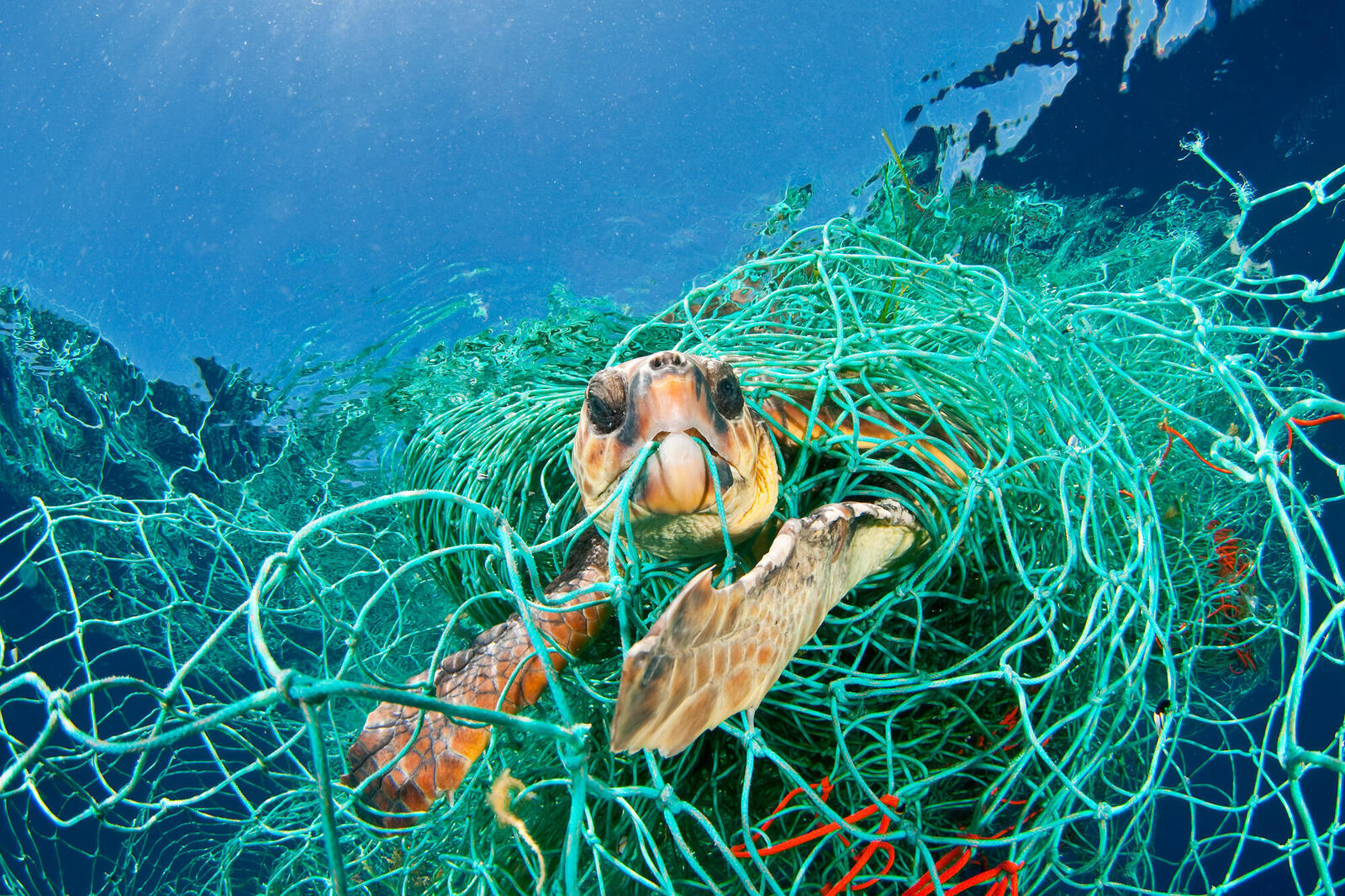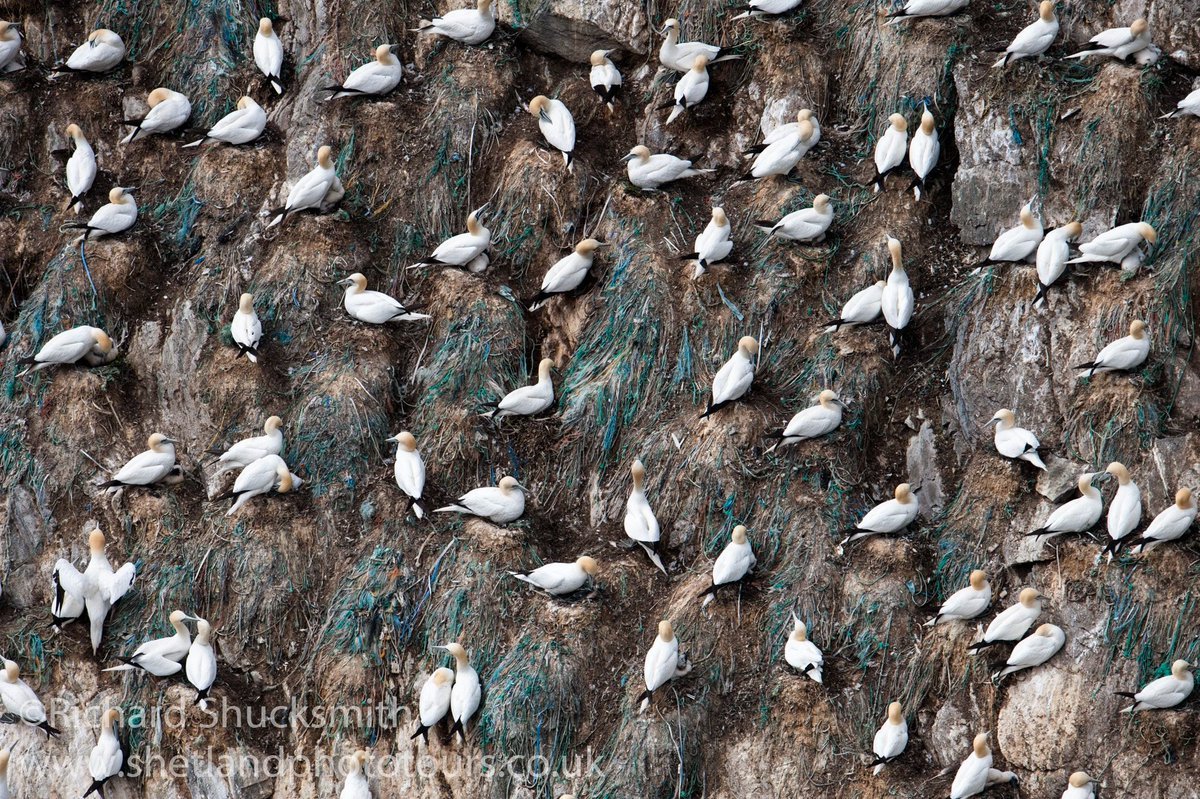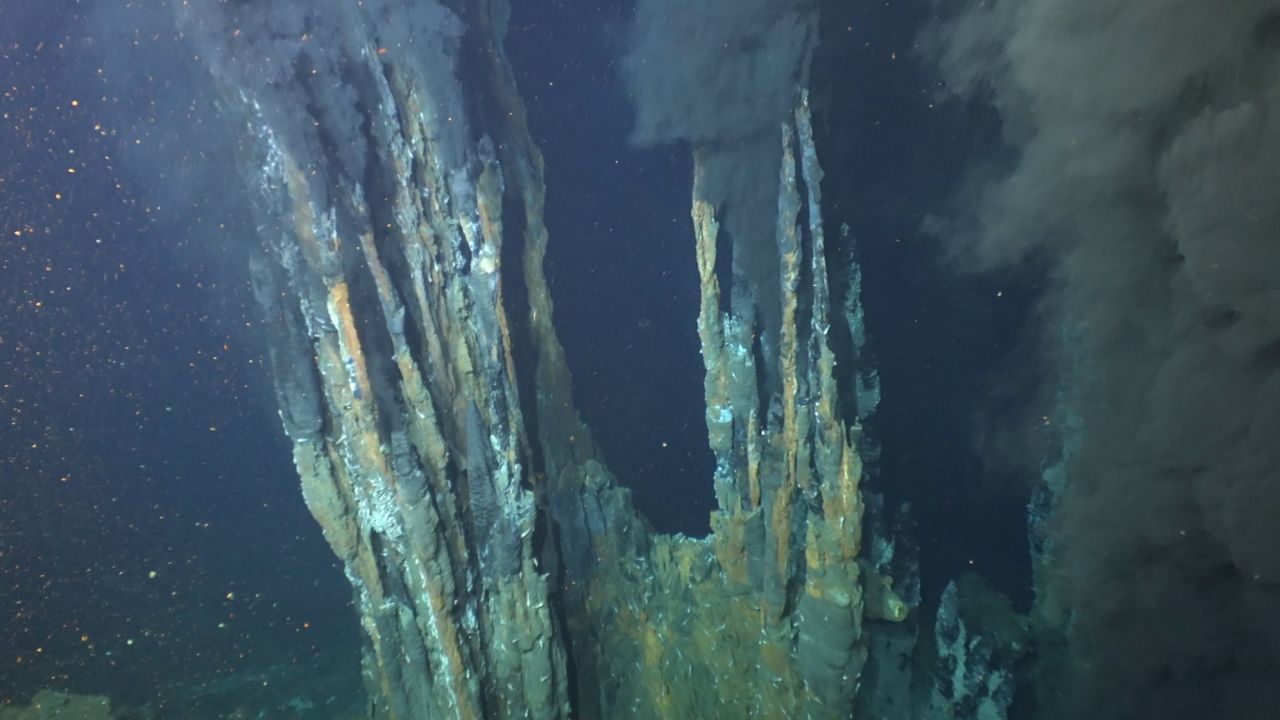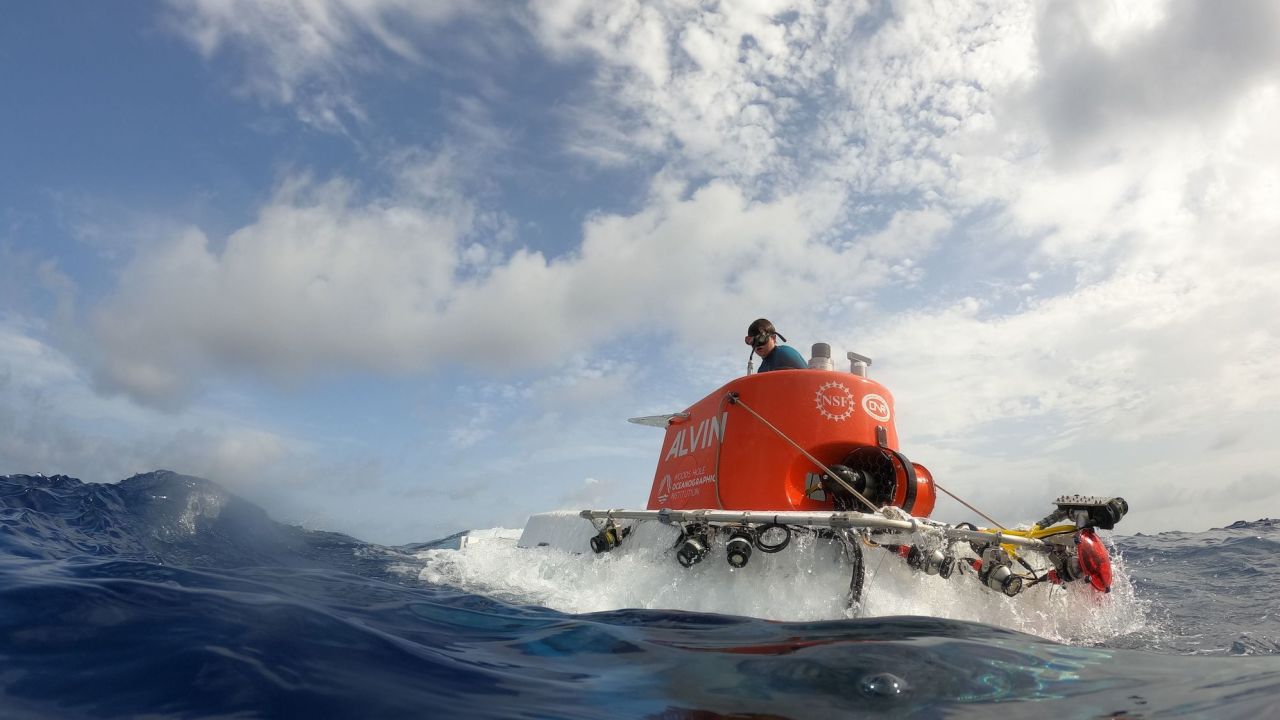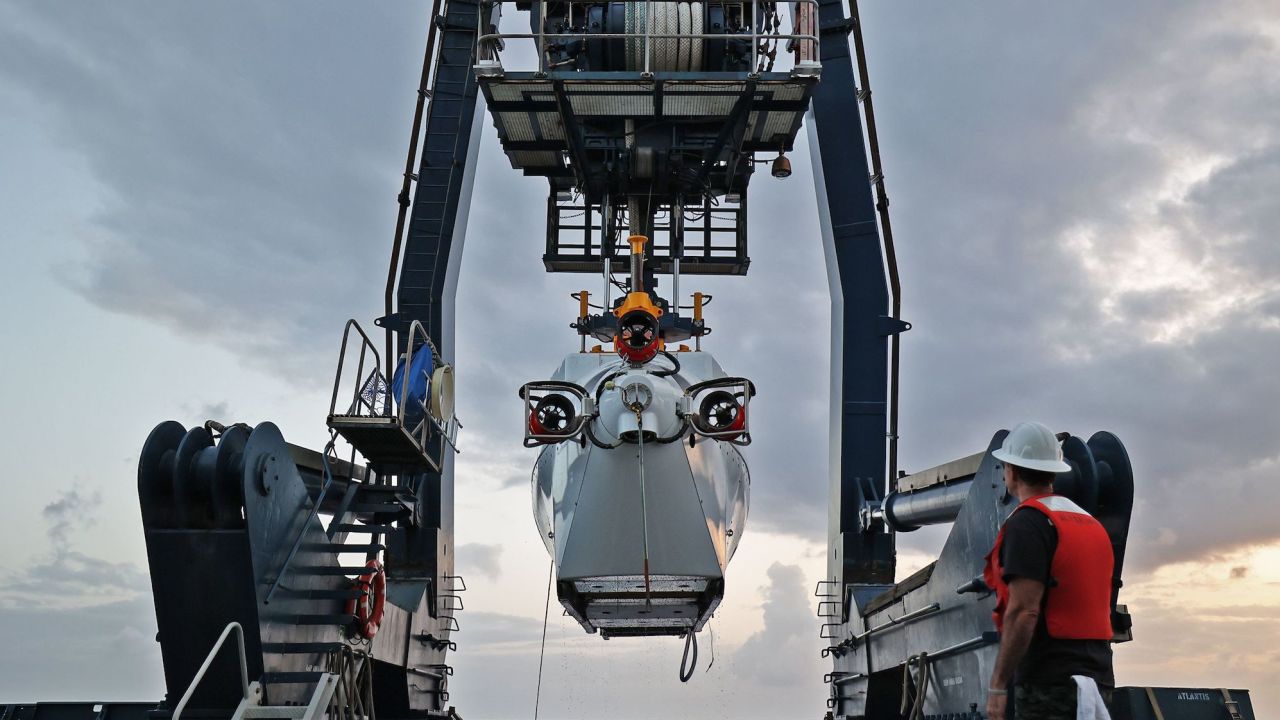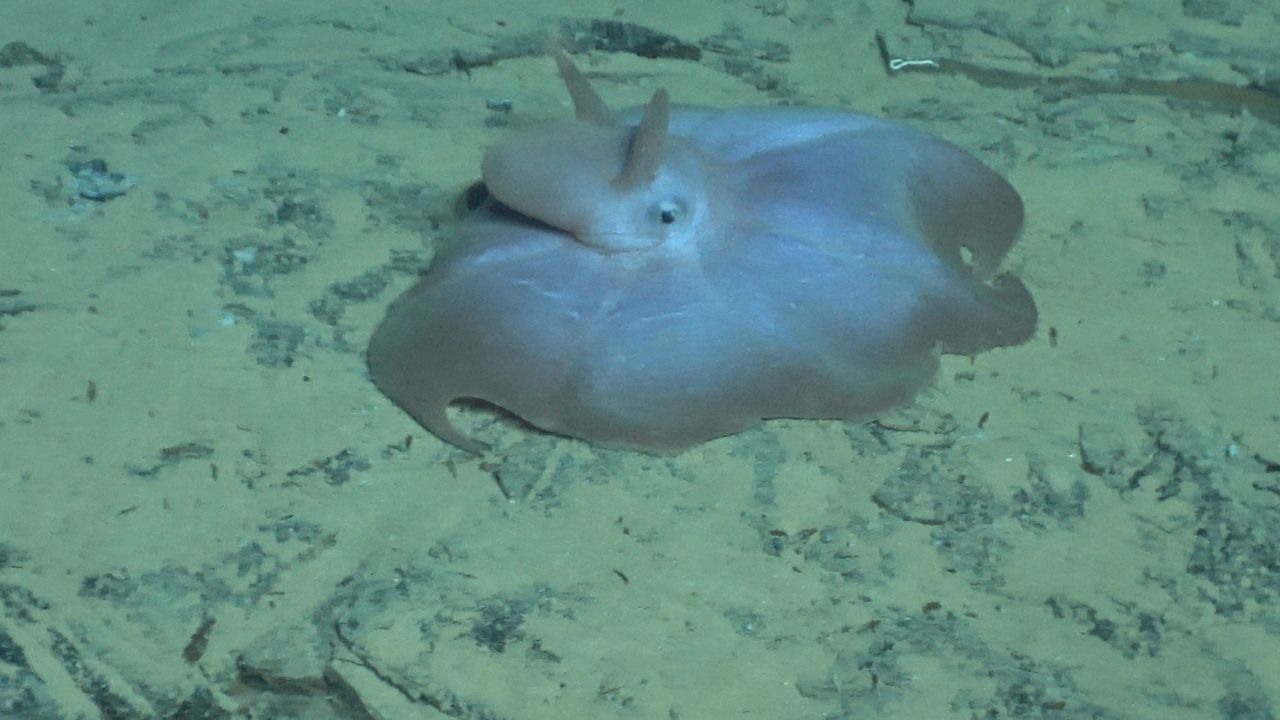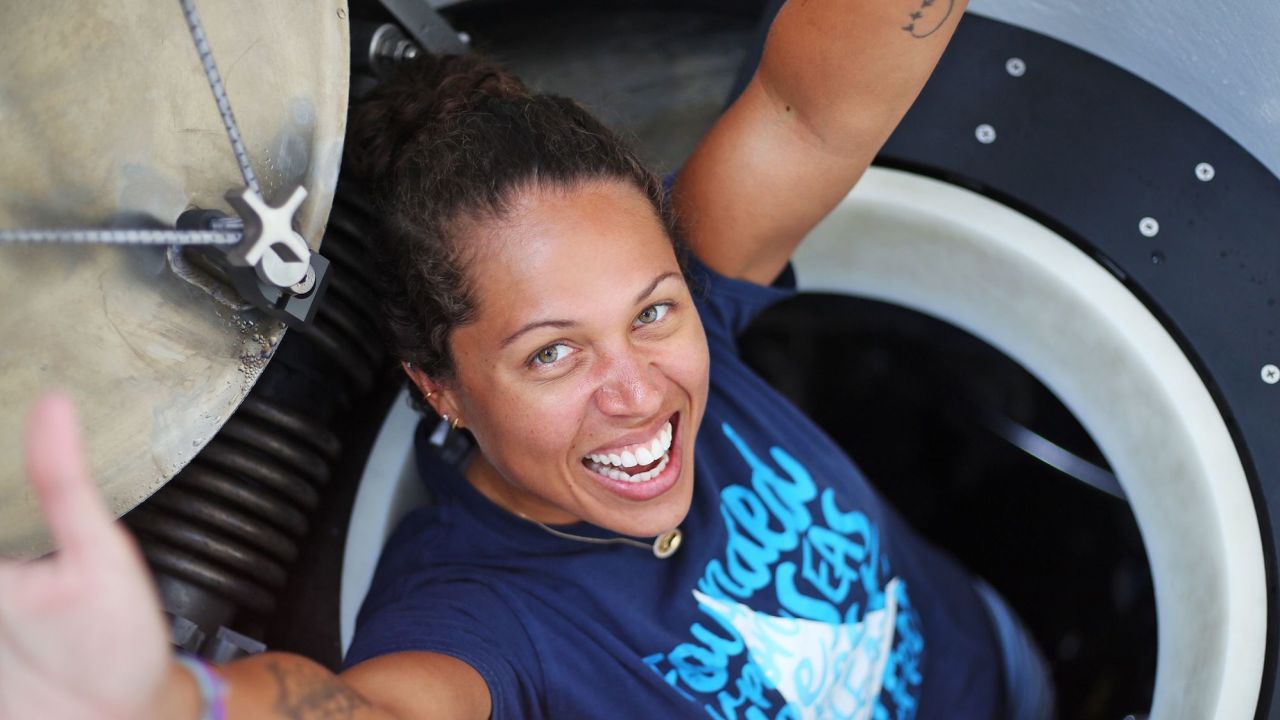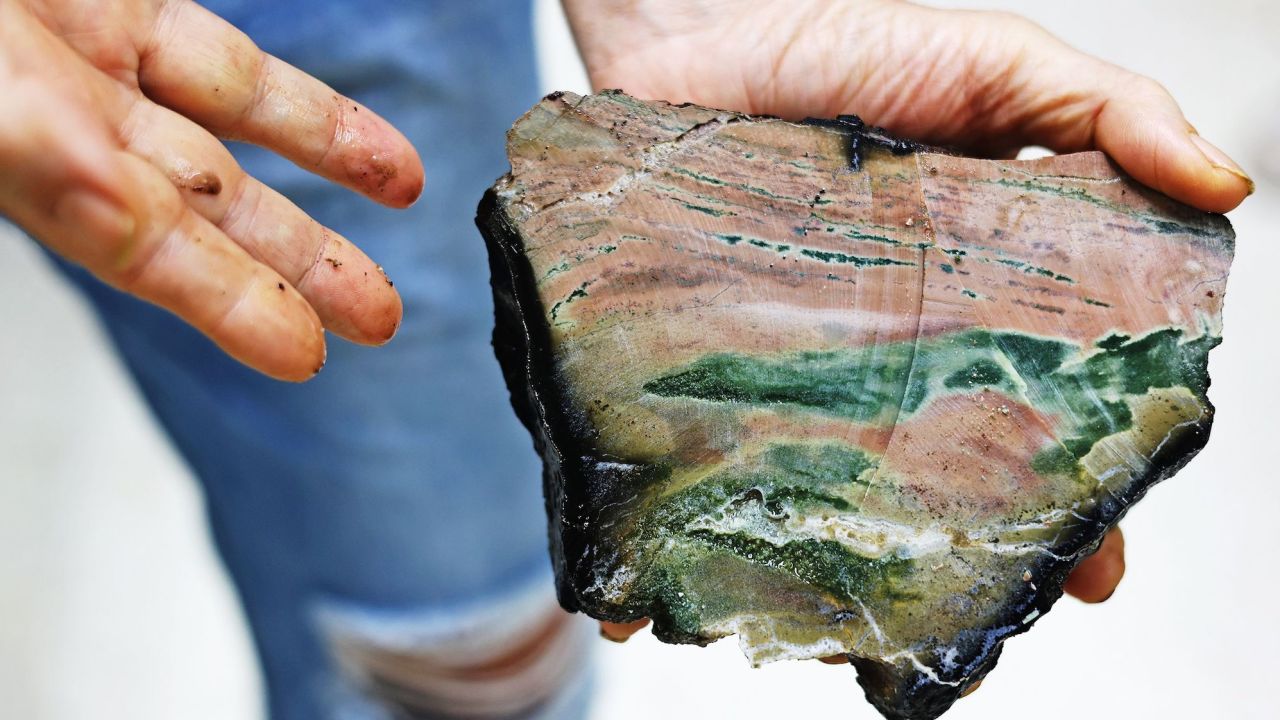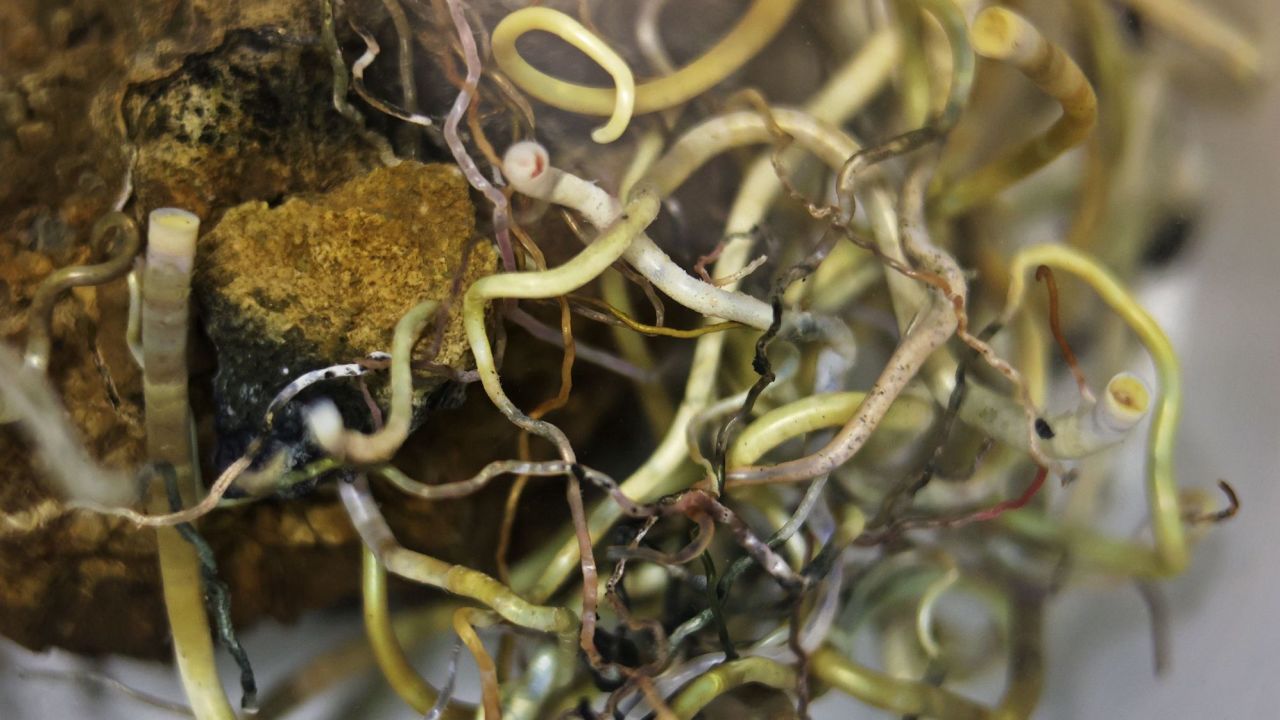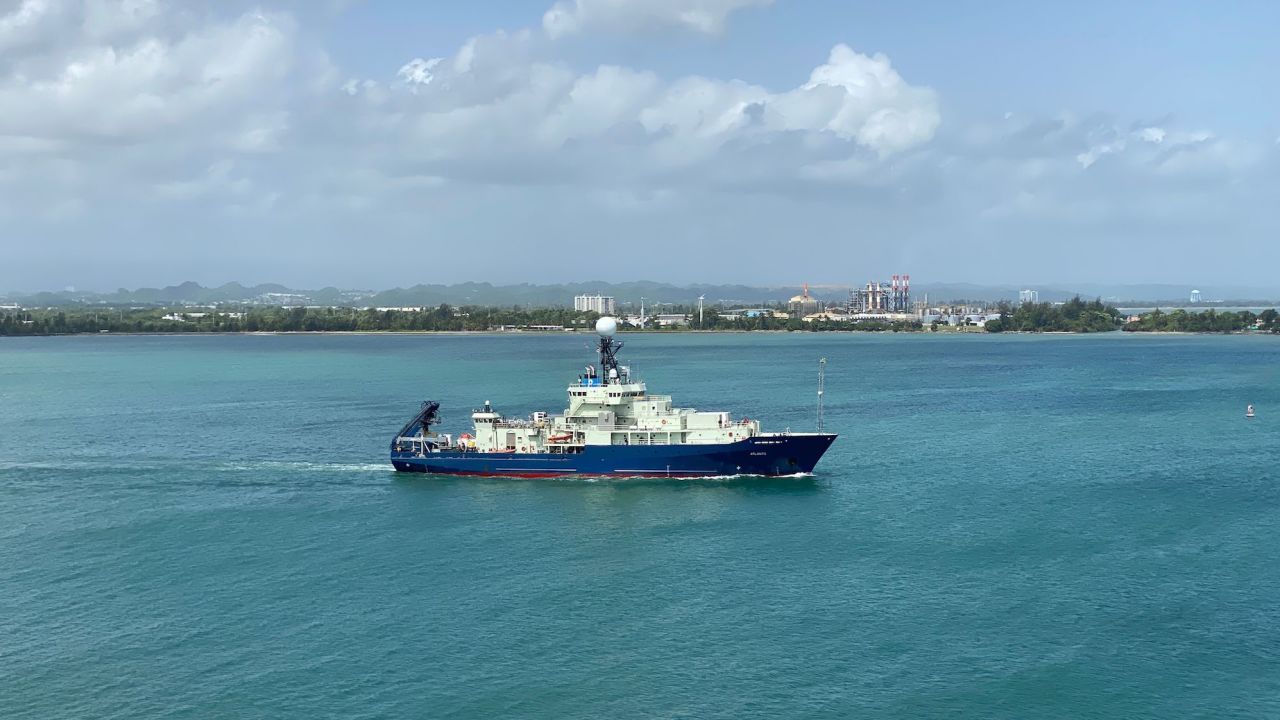PLSTC from Laen Sanches
Saturday, October 22, 2022
Friday, October 21, 2022
How will China’s submersibles help us explore the ocean depths?
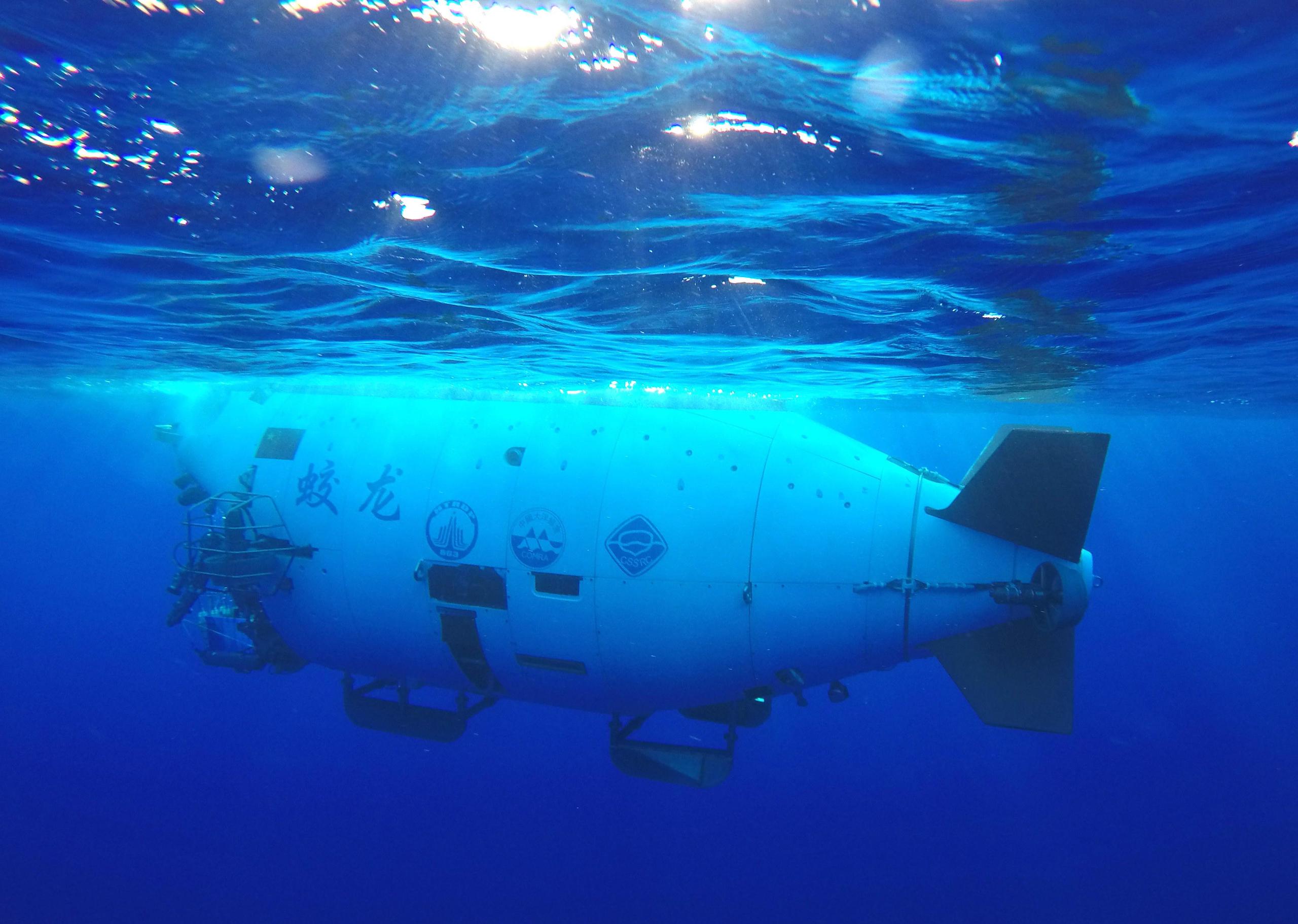
The Jiaolong manned submersible is dispatched on a dive to survey the Mariana Trench at a depth of 6,700 meters (Image: Alamy)
From China Dialogue Ocean by Zhang Chun, Liu Jun
Demand for resources in the seabed and a need to protect the deep-sea environment have spurred development of submersibles. Can they help us unlock the mysteries of the ocean?
The Ministry of Science and Technology named a self-powered “soft robot” submersible that survived the pressure of the Mariana Trench as one of China’s 10 biggest technological achievements in 2021.
This wasn’t the first time that the deepest part of the world’s oceans have been explored, but the robot, built by a team from Zhejiang University and research institute Zhejiang Lab, was the lightest submersible ever to make the trip.
Weighing less than 250 grams, it is shaped somewhat like a snailfish, with the same two flapping dorsal fins.
Its success has opened up new possibilities for exploring the deep sea.
The Ministry of Science and Technology named a self-powered “soft robot” submersible that survived the pressure of the Mariana Trench as one of China’s 10 biggest technological achievements in 2021.
This wasn’t the first time that the deepest part of the world’s oceans have been explored, but the robot, built by a team from Zhejiang University and research institute Zhejiang Lab, was the lightest submersible ever to make the trip.
Weighing less than 250 grams, it is shaped somewhat like a snailfish, with the same two flapping dorsal fins.
Its success has opened up new possibilities for exploring the deep sea.
The soft robot submersible developed by a team of Chinese scientists swims at 3,224 metres during a field test
This video shows the deep-sea free swimming of soft robot in the South China Sea.
This video shows the deep-sea free swimming of soft robot in the South China Sea.
The soft robot was grasped by a robotic arm on ‘HAIMA’ ROV and reached the bottom of the South China Sea (depth of 3,224 m).
After the releasing, the soft robot was actuated with an on-board AC voltage of 8 kV at 1 Hz and demonstrated free swimming locomotion with its flapping fins.
The front view and side view of swimming process were recorded by the cameras and LED lights on the ROV.
This video shows the potential of soft robots in deep-sea exploration.
(Video © Li Guorui et al)
The “deep sea” refers to any ocean waters more than 200 metres deep – the depth at which there’s no longer enough light for photosynthesis.
Four-fifths of the ocean is much deeper still, at over 2,000 meters.
There, the darkness is joined by crushing pressure and exploration becomes hugely challenging; only a few dozen people have ever travelled into the Mariana Trench.
The very deepest point of the trench, Challenger Deep, is the same distance from sea level as seven Eiffel towers stacked on top of Mount Everest.
The pressure at the bottom is equivalent to a tonne of weight pressing on a fingernail.
To avoid being crushed, submersibles generally need tough outer shells.
Manned submersibles have the highest requirements and can easily cost in the hundreds of millions of dollars and take years to build.
But that has not stopped deep-sea explorers.
Down in the depths, rich mineral resources and diverse ecosystems can be found.
The ocean absorbs one-third of humanity’s carbon dioxide emissions, which is of huge significance for climate change.
It is a source of both food and medicine.
And it may hold the secrets to the origins of life on Earth and its subsequent evolution.
Despite a later start than the US, Japan and France, China too has developed submersibles to prospect for seabed resources, search for ocean life, and help to understand and tackle climate change.
Its first manned submersible, launched in 1986, was intended for underwater rescues and had a maximum depth of only 300 metres.
In 1997, the unmanned submersible CR-01 successfully reached a depth of 5,179 metres.
Chinese manned submersibles capable of exploring deeper waters didn’t appear until 2009, with trials of a submersible named Jiaolong.
It would be another decade before Chinese explorers reached the bottom of the Mariana Trench.
Over these years, China has developed manned submersibles, unmanned underwater robots and underwater gliders, laying a foundation for future deep-sea exploration.
So, how will these different vehicles help us explore the deep ocean?
Towards seabed mining

Name: CR-01
Launched: 1995
Max operational depth: 6,000m
Operation: Autonomous
The CR-01 is a self-propelled robotic vehicle that can follow a programmed trajectory and carry out survey tasks such as taking photos and measuring temperature and salinity (Graphic: Manuel Bortoletti / China Dialogue Ocean.)
Launched: 1995
Max operational depth: 6,000m
Operation: Autonomous
The CR-01 is a self-propelled robotic vehicle that can follow a programmed trajectory and carry out survey tasks such as taking photos and measuring temperature and salinity (Graphic: Manuel Bortoletti / China Dialogue Ocean.)
The CR-01 is an autonomous underwater vehicle, or AUV, able to reach depths of 6,000 metres, and therefore 98% of the seabed.
Launched in 1995 and with a torpedo-like appearance, it can follow a programmed trajectory to gather measurements and take photographs.
But it is only a seabed observer – it cannot carry out more complex tasks such as collecting samples.
The CR-01 was one of the world’s earliest successes in prospecting for underwater minerals.
In 1991, the China Ocean Mineral Resources R&D Association (COMRA) was registered as the fifth pioneer investor in deep-sea mining with bodies working to establish the International Seabed Authority (ISA).
A few years later, the ISA approved COMRA’s plans to carry out initial surveys of 150,000 square kilometres of seabed in the northeast Pacific.
In the early summer of 1997, the CR-01 underwent 39 days of sea trials, supported by the vessel Da Yang 1.
It surveyed marine mineral deposits known as polymetallic nodules on the seabed at depths of up to 5,179 metres, as well as taking photographs and temperature and salinity readings.
The successful completion of its mission was key to China gaining the unique right to prospect for minerals across 75,000 square kilometres of seabed, as well as priority development rights, in 1999.
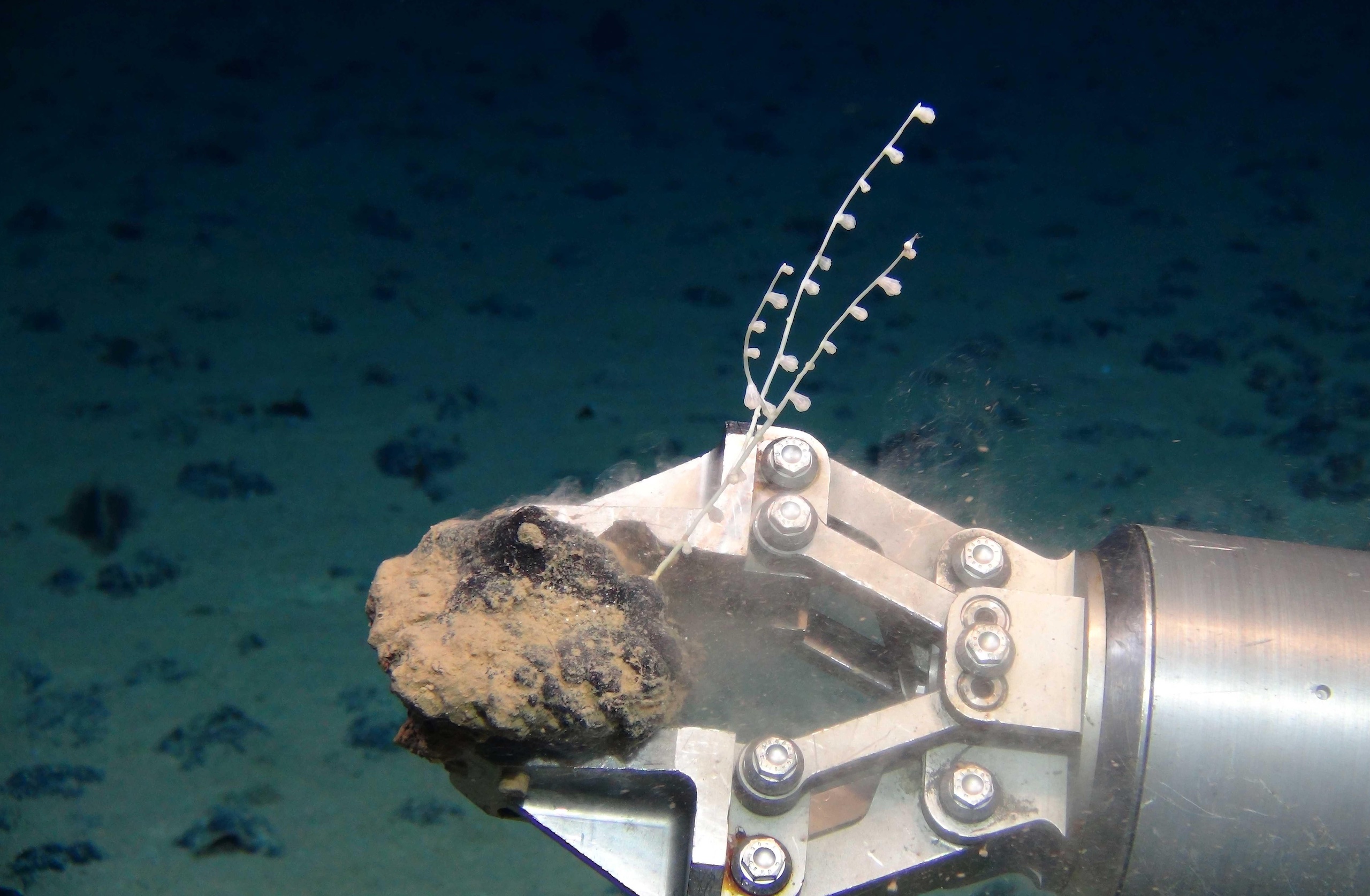
A deep-sea coral on a polymetallic nodule from the Clarion Clipperton Zone in the central Pacific, one of the areas in which pioneer deep-sea miners have shown greatest interest
The ISA was founded in 1994 to regulate seabed prospecting and exploitation, in accordance with the United Nations Convention on the Law of the Sea.
It issued 31 exploration contractsto various nations, which also gained priority in development rights to the contracted areas.
But there is not yet agreement on a “Mining Code”, and so actual mineral extraction has not started.
One of the sticking points is how to avoid mining causing devastation to the deep-sea environment.
After all, we have explored only 5% of the seabed and know little about deep-sea organisms and ecologies.
The Jiaolong submersible, a manned deep-sea submersible owned by COMRA with the capability to go to depths of more than 7,000 metres, is able to reach 99.8% of the seabed.
Its development was linked to COMRA’s increasing involvement in surveying the international seabed, and the state’s increasingly urgent need for manned submersibles.
Such submersibles can be more precise in selecting samples and carry out more comprehensive observations.
While they can prospect for minerals and take samples of seabed silt, minerals, water and organisms, their most important function is helping China and the world understand seabed organisms.
Exploring new life

Name: Jiaolong
Launched: 2009
Deepest dive: 7,062m
Operation: Manned
Capable of carrying three crew, the Jiaolong has robotic arms to collect samples of mineral deposits and deep-sea organisms.
It can also record video and use sonar to create detailed maps, among other capabilities.
(Graphic: Manuel Bortoletti / China Dialogue Ocean)
Launched: 2009
Deepest dive: 7,062m
Operation: Manned
Capable of carrying three crew, the Jiaolong has robotic arms to collect samples of mineral deposits and deep-sea organisms.
It can also record video and use sonar to create detailed maps, among other capabilities.
(Graphic: Manuel Bortoletti / China Dialogue Ocean)
On Christmas Eve 2014, the Jiaolong – having completed a number of diving trials to depths of 7,000 metres – was launched from the Xiang Yang Hong 9 survey vessel to carry out its 35th ocean survey.
This time, its destination was the mid-ocean ridge in the southwest Indian Ocean.
Marine biologist Xiao Xiang summed up the aim of the mission: “In scientific terms, we all want to see if the biodiversity here is more like that of the Pacific or the Atlantic.”
He added: “The southwest Indian Ocean is one of the least studied ocean areas.”
The Jiaolong discovered and took a sample from a black smoker – a type of hydrothermal vent – and also collected silt and water samples from a depth of 2,000 metres.
Xiao Xiang hopes to use the single-celled organisms found within the black smoker to help explain how life on Earth began.
The Jiaolong discovered and took a sample from a black smoker – a type of hydrothermal vent – and also collected silt and water samples from a depth of 2,000 metres.
Xiao Xiang hopes to use the single-celled organisms found within the black smoker to help explain how life on Earth began.
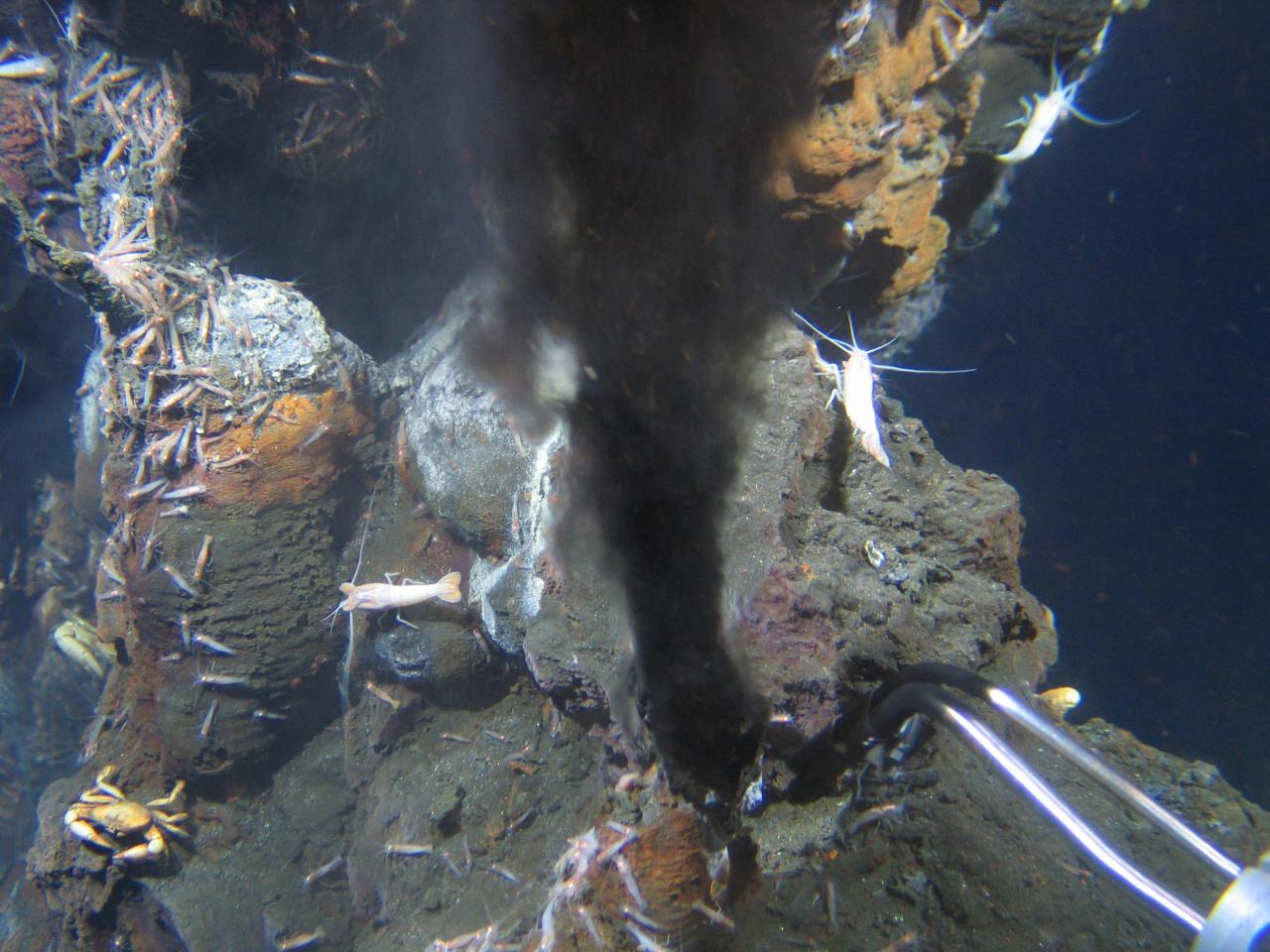
A black smoker on the Mid-Atlantic Ridge swarming with deep-sea shrimps (Image: ROV KIEL 6000 / GEOMAR, CC BY)

Deep-sea snails collected by the Jiaolong during its mission to study hydrothermal vents in the southwest Indian Ocean (Image: Zhang Xudong / Alamy)
The ocean depths teem with new species awaiting discovery.
In 2019 alone, 66 were identifiedby scientists from around the world including China.
With its maximum depth of 7,000 metres, the Jiaolong can carry out geophysical and biological studies on almost all of the seabed, but not all.
In November 2020, the “Fendouzhe” (or “Striver”), another three-person submersible, reached some of the deepest parts of the Mariana Trench, bringing back samples of rocks, seawater and organisms.
In October 2021, it started surveying the trench.
The “Mariana Trench biology and environment research program” was formally started during this ocean survey.
Its intention is to “invite researchers from China and overseas to participate in research into the Mariana Trench, to work together to study deep-sea geophysical change, how life developed and adapted to different environments, and biodiversity and climate change.”
Such grand plans will need help from cheaper and more flexible unmanned submersibles.
The lightest unmanned submersibles are usually designed only to make observations and take measurements.
The heaviest “work class” underwater robots have manipulator arms to allow for work such as construction and welding, while “light work class” submersibles sit between the two.
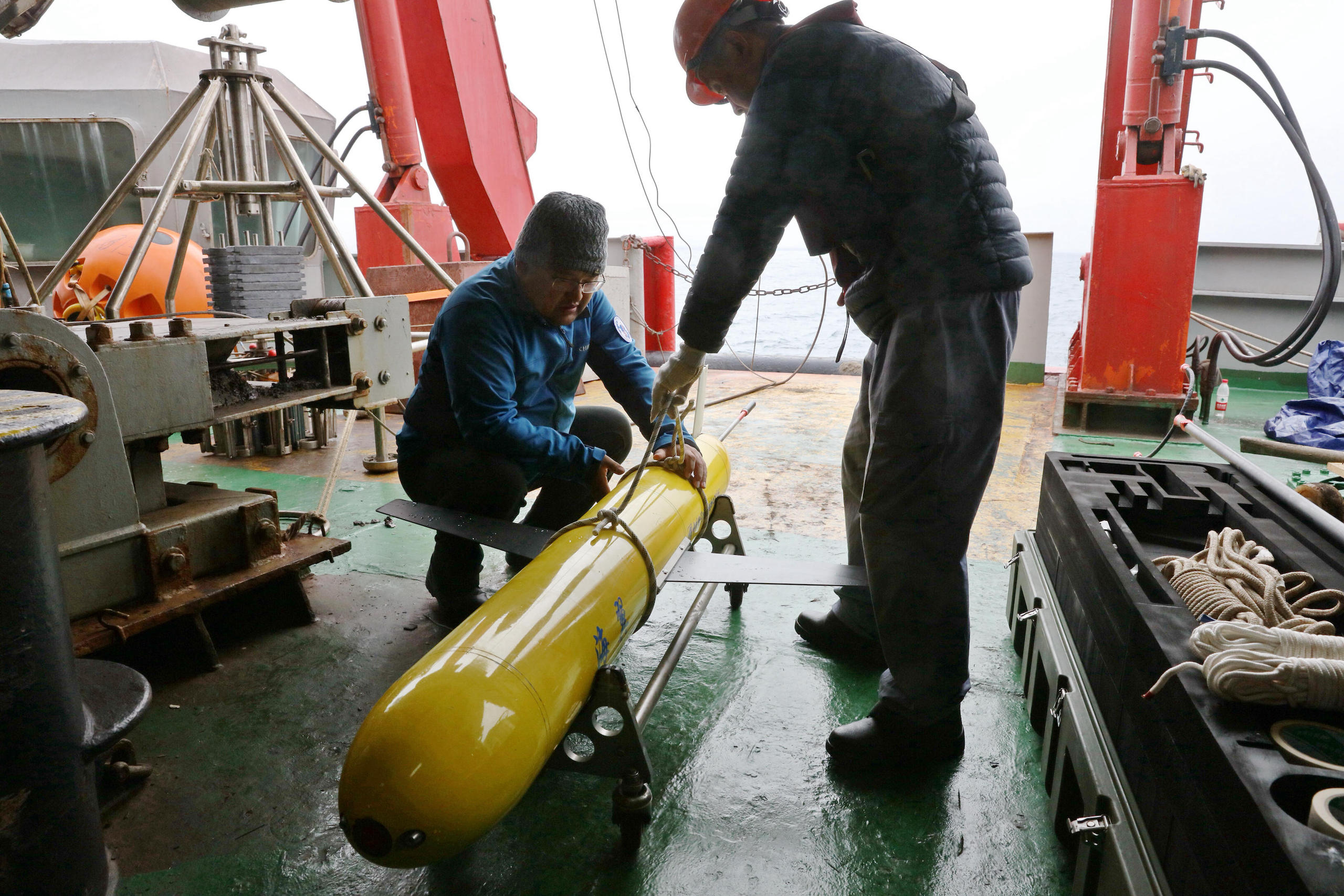
Scientists on the Chinese icebreaker Xue Long prepare to launch a Haiyi deep-sea glider in the Bering Sea (Image: Shen Cheng / Alamy)
Currently, China has five models of unmanned submersible, ranging from observation class to light work class, which have reached depths of 10,000 metres.
The Haidou 1 was developed by the Chinese Academy of Sciences’ Shenyang Institute of Automation in 2016.
It has three operating modes: tethered by a cable, for optimum signal transmission; untethered; and a hybrid mode where the submersible navigates independently but the cable remains connected.
As a light work class submersible, the Haidou 1 has manipulator arms that can operate at great depths and grab or place items, to some extent replicating the functionality of manned submersibles.
Gathering ocean data

Name: Haiyan-X
Launched: 2020
Deepest dive: 10,619m
Operation: Autonomous
The Haiyan-X is one of a series of gliders designed to follow ocean eddies and survey conditions such as salinity and acoustics over long periods of time.
Mimicking the function of fish bladders, it uses gas to control its buoyancy, rising to the surface to transmit data.
(Graphic: Manuel Bortoletti / China Dialogue Ocean)
Launched: 2020
Deepest dive: 10,619m
Operation: Autonomous
The Haiyan-X is one of a series of gliders designed to follow ocean eddies and survey conditions such as salinity and acoustics over long periods of time.
Mimicking the function of fish bladders, it uses gas to control its buoyancy, rising to the surface to transmit data.
(Graphic: Manuel Bortoletti / China Dialogue Ocean)
Many submersibles can measure temperature, salinity and oxygen levels at different depths.
That data helps us keep up to date on how the oceans are changing and take appropriate climate change mitigation and adaptation measures.
In 2013, a team led by Wu Lixin, a Chinese scientist, came up with the “Transparent Ocean” plan.
A key aim was to use modern ocean monitoring and exploration tech to gather real-time ocean data and create a high-resolution network of observations.
Alongside satellites and floats known as Argo floats, underwater gliders are also used to gather ocean data.
Resembling small planes, with two wings and a tailplane, they control their buoyancy vertically to descend into deeper water and then rise up again to the surface, where they can send the data they have gathered back to a receiving station.
The lateral movement of Tianjin University’s Haiyan gliders is directed by ocean eddies.
The Haiyan-X can reach depths of around 10,000 metres and in July 2020 spent six days carrying out deep-sea observations, gathering cross-sectional profile data including several at depths between 3,000 and 10,619 metres and sending back information on salinity and acoustics, as well as imagery.
In 2018, the Shenyang Institute of Automation’s Haiyi gliders were used by China’s 9thexpedition to the Arctic and launched in the Bering Sea.
This was the first use of China’s underwater gliders in its Arctic research.
In 2017, an ocean dataset compiled by Chinese scientists was used for the first time by the Intergovernmental Panel on Climate Change in its special report on the ocean.
Underwater trends

Name: TBC
First deep-sea trials: 2019
Deepest dive: 10,900m
Operation: Autonomous
Inspired by the Mariana hadal snailfish, this 22cm-long robot can withstand enormous pressure thanks to its soft silicon body and the decentralised positions of its electronics.
Its functionality as a research tool is still being developed.
(Graphic: Manuel Bortoletti / China Dialogue Ocean)
First deep-sea trials: 2019
Deepest dive: 10,900m
Operation: Autonomous
Inspired by the Mariana hadal snailfish, this 22cm-long robot can withstand enormous pressure thanks to its soft silicon body and the decentralised positions of its electronics.
Its functionality as a research tool is still being developed.
(Graphic: Manuel Bortoletti / China Dialogue Ocean)
Unlike submersibles with solid hulls, the soft robot being developed by scientists in Zhejiang mimics the structure of snailfish that live thousands of metres deep.
The necessary circuits and batteries are embedded in a soft silicon body designed to withstand huge pressures.
The robot is 22cm long and 28cm wide and can move in straight lines or curves by moving its “fins”, just like a snailfish.
Smaller, lighter and cheaper than other deep-sea equipment, the invention means new possibilities for deep-sea exploration, and particularly the study of seabed microenvironments.
Globally, dozens of manned and hundreds of unmanned submersibles are in use.
Both types have their advantages, and both are needed.
Manned submersibles are complex and precise machines, requiring specialist personnel to operate.
The Chinese ocean science community is currently training more of these pilots.
Unmanned submersibles are cheaper and more flexible.
China has developed a range of underwater robots according to its varying needs in its own and international waters.
Alongside the roles described above, they can also be used for oil and gas prospecting, environmental studies, rescues, underwater archaeology and the inspection and repair of underwater pipelines and cables.
The soft robot developed by scientists in Zhejiang was inspired by a snailfish discovered in 2014 in the Mariana Trench.
This footage of the species was filmed at a depth of 7,485 metres.
(Video © SOI / HADES / University of Aberdeen (Dr Alan Jamieson))
This footage of the species was filmed at a depth of 7,485 metres.
(Video © SOI / HADES / University of Aberdeen (Dr Alan Jamieson))
Costs are an unavoidable issue for all scientists carrying out ocean research.
Lower-cost, unmanned submersibles will be able to carry out an increasing range of research tasks as they become smarter, more operable, and better able to communicate with the surface.
The soft robot which travelled to Challenger Deep does not currently gather information.
But the development team plans to design new materials and structures, and make it smarter, more capable and more efficient.
In the future, it may be able to take precise samples from coral reefs or caves, becoming a valuable tool for marine biologists.
Links :
- GeoGarage blog : China’s new extra-large submarine drones revealed / Chinese manned deep-sea submersible gets rare look at deepest ocean depths, the Mariana Trench / China becomes fifth country to acquire deep-diving technology / China is planning a massive sea lab 10000 feet underwater / A maritime revolution is coming, and no one’s in the wheelhouse
Thursday, October 20, 2022
New study reveals ‘staggering’ scale of lost fishing gear drifting in Earth’s oceans
A loggerhead turtle entangled in a ghost net in the Mediterranean Sea.
Photograph: Jordi Chias/WWF/PA
Photograph: Jordi Chias/WWF/PA
From The Guardian by Graham Readfearn
Lost nets, lines and hooks trap wildlife for years as they float in the ocean, sink to the bottom or are washed ashore
Enough commercial fishing line is left in the ocean each year to stretch to the moon and back, according to the most comprehensive study ever completed of lost fishing equipment.
The staggering amounts of lost gear, which includes 25 million pots and traps and 14 billion hooks, was likely having deadly consequences for marine life, one of the study’s authors said.
Enough nets were lost or discarded each year to cover Scotland.
If all types of lost line was tied together, it would be able to stretch round the Earth 18 times.
“This is super confronting,” said Dr Denise Hardesty, of the Australian government’s CSIRO science agency, and one of the study’s authors.
“This is having an unimaginable toll of unknown deaths that could result in population level effects for marine wildlife.”
Published in the journal Science Advances, researchers from CSIRO and the University of Tasmania used standardised interviews with 451 commercial fishers in seven countries to ask what was being lost.
Researchers matched those interviews with data on the amount of commercial fishing globally to estimate what was lost.
Enough commercial fishing line is left in the ocean each year to stretch to the moon and back, according to the most comprehensive study ever completed of lost fishing equipment.
The staggering amounts of lost gear, which includes 25 million pots and traps and 14 billion hooks, was likely having deadly consequences for marine life, one of the study’s authors said.
Enough nets were lost or discarded each year to cover Scotland.
If all types of lost line was tied together, it would be able to stretch round the Earth 18 times.
“This is super confronting,” said Dr Denise Hardesty, of the Australian government’s CSIRO science agency, and one of the study’s authors.
“This is having an unimaginable toll of unknown deaths that could result in population level effects for marine wildlife.”
Published in the journal Science Advances, researchers from CSIRO and the University of Tasmania used standardised interviews with 451 commercial fishers in seven countries to ask what was being lost.
Researchers matched those interviews with data on the amount of commercial fishing globally to estimate what was lost.
Annual losses included:
- 78,000 sq km (30,000 sq miles) of purse seine nets and gillnets
- 215 sq km of bottom trawl nets
- 740,000 km (46,000 miles) of main long lines
- 15.5 million km (9.6m miles) of branch lines
- 13 billion longline hooks
- 25 million traps and pots
The countries were chosen because they had a fishing industry using most fishing methods.
Smaller boats lost more gear than larger boats, and bottom-trawl fishers lost more nets than midwater trawlers.
A previous estimate put the percentage of gear lost at a higher level, but that research relied on a range of studies, rather than a standardised estimation based on interviews.
Hardesty said fishers often lost nets due to bad weather where equipment wasn’t properly secured or floated away, or gear became entangled with equipment from other vessels competing for the same fish.
But she said because nets were designed to catch and kill animals, lost gear would continue to entrap wildlife for years as it either floated in the ocean, sank to the bottom or washed ashore.
“That’s birds, turtles, whales, sharks, dolphins, dugongs,” she said.
“You are then also catching a whole bunch of fish but then not eating them.
That becomes a food security problem because that’s protein that’s not feeding people around the world.”
Kelsey Richardson, a lead author from the University of Tasmania, said the detailed estimates should help fisheries managers, the commercial fishing sector, and conservationists to better target solutions.
The nets were adding to the global problem of marine plastic pollution, she said
Hardesty said there were solutions, such as local governments introducing buy-backs of older fishing gear which tended to get lost more often than new equipment.
Tags or labels could be attached to gear, and free facilities could be introduced at harbours to allow fishers to discard unusable nets safely.
Richard Leck, head of oceans at WWF Australia, said: “These figures are breathtaking.
This gives us a sense of the horrendous scale of the problem and the urgent need to tackle it.
“Ghost nets – as they’re known – are a particularly lethal form of plastic pollution for all the marine life we care about.
Once these nets are lost from a fishing vessel, they don’t stop fishing.”
Leck said a global plastic pollution treaty currently being negotiated through the United Nations needed to address the problem of ghost nets “at a global level to make sure countries are accountable” through transparent reporting and labelling of fishing gear.
“This affects all countries – not just the places where nets are lost.
This gear can migrate around oceans and continue to catch fish and entangle threatened species.”
Links :
Wednesday, October 19, 2022
NOAA system makes the fastest-growing port In Texas safer

Ritu S
From Geospatial world
Located in the industrial hub of Brazoria County, Texas, Port Freeport is one of the most accessible ports in Texas by land and sea.
It is a deep sea port with the shortest deep-water channel on the Texas Coast and an abundance of land available for future development.
On October 4 it was announced that now this port has an added advantage offering enhanced safety feature for the mariners sailing in and around it.
The port has been fitted with an efficient NOAA marine navigation system which has increased its safety, commercial opportunities and real-time observations.
Freeport is now fitted with NOAA marine navigation system
This Texan seaport is equipped with NOAA’s Physical Oceanographic Real-Time System or PORTS which ensures safe and efficient marine navigation for vessels entering and exiting its port waters.
Port Freeport is the 38th system in this network of marine sensors.
The integrated series of precision marine navigation sensors track oceanographic and meteorological conditions as they unfold around the port.
“Precision navigation is critical to our nation’s data-driven blue economy and helps our environment,” said NOAA Administrator Rick Spinrad at the announcement of the NOAA system in Freeport.
“The real-time information tracked by NOAA allows ships to move safely within U.S.
waterways to make operations more efficient and lower fuel consumption, which also lowers carbon emissions” said Spinrad.
Physical Oceanographic Real-Time System (PORTS)
NOAA’s PORTS program provides accurate and critical information to all vessel operators and helps them to take efficient decisions regarding their movement within the port area and thereby greatly enhancing their productivity and reducing accident risks.
This system is an effective decision-support tool that improves coastal resource management.
Some relevant marine data collected and disseminated by PORTS are observations of water levels, currents, salinity, bridge air gap and meteorological parameters like winds, atmospheric pressure, and air and water temperatures, all of which are essential for safe navigation by mariners.
Freeport TX with the GeoGarage platform (NOAA nautical raster chart)
Port safety enhances the economy
The US marine transportation system is the backbone for the movement of goods, services, and people throughout the country and today the network of waterways and seaports is challenged by ever-increasing demand.
Estimates for Port Freeport have shown that more than 30 million tons of cargo moved through the port in 2019, which supported more than 279,000 jobs nationwide, for a total economic impact of USD 149 billion.
The economic impact of port activities is indeed far-reaching.
However, increased marine traffic and the movement of bigger vessels bring in the challenge of the increased potential for accidents.
Estimates have shown well over 600 commercial vessels annually are involved in accidents on the nation’s waterways and major seaports.
Maritime accidents can result in catastrophic impacts resulting in the loss of hundreds of millions of dollars in property damage, oil spill contaminations, harmful effects on the coastal environment, port facility closures, and the potential for loss of life.
The trend towards bigger vessels and greater port traffic will result in increased potential for accidents.
In this context, the presence of NOAA’s PORTS system is a much-needed feature to ensure such marine vessel accidents may be avoided and further protect the economy linked to marine services from incurring any huge loss.
Real-time observations from PORTS®, when combined with up-to-date nautical charts and precise positioning, can greatly increase the safety and efficiency of maritime commerce.
In fact, reports have confirmed that there has been a nearly 60 per cent reduction in groundings at some seaports currently served by PORTS.
All PORTS observations and predictions are quality controlled by NOAA 24 hours a day, 365 days a year.
“This new system, and the others like them around the country, reduce ship accidents by more than 50%, and allow for larger ships to get in and out of seaports and reduce traffic delays,” said Nicole LeBoeuf, director of NOAA’s National Ocean Service at the announcement of the Freeport connection with the PORTS.
“PORTS can also provide real-time data as conditions rapidly change, giving our coastal communities time to prepare and respond.”
Geospatial system provides essential marine information
This geospatial system provides much needed real-time location data collected through the newly installed current meters in the surrounding waterways where those conditions can rapidly change over small distances.
These sensors are now helping the Texas seaport gain much valuable information.
Freeport’s new system also integrates real-time water level and meteorological information from the NOAA Freeport Harbor National Water Level Observation Network station.
This station provides access to details about wind speed and wind directional data which will support the mariners to plan safer ship movements during adverse weather conditions.
Safety is paramount to the maritime community and the recent announcement of the location data enrichment for the Texas port ushers in safer and more efficient port services for Freeport and in turn invites better economic opportunities for the surrounding areas.
Climate change: Can an enormous seaweed farm help curb it?
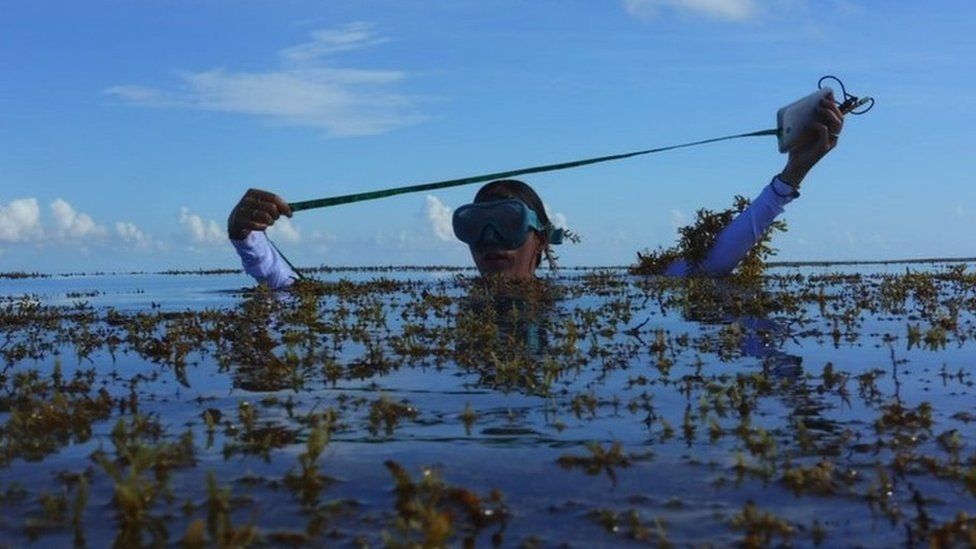
A scientist from Seafields measures the depth on beds of floating Sargassum
From BBC by David Reid and Justin Rowlatt
Imagine a huge seaweed farm the size of Croatia floating in the South Atlantic between Africa and South America.
Spinning in a natural ocean eddy, it sucks a billion tonnes of carbon out of the atmosphere every year and sinks it to the ocean floor out of harm's way.
Far-fetched? Maybe.
But a British businessman plans to have this up and running by 2026.
Scientists say reducing the world's emissions probably won't be enough and that carbon capture will be crucial to limiting global warming.
But carbon capture schemes have so far been relatively low-scale and seen limited success.
If they are going to work, they need to be bold, big, and attractive to investors.
Businessman John Auckland believes he has just such an idea.
He wants to exploit what he calls "the wondrous properties" of the floating seaweed sargassum.
He's confident his Seafields floating farm will draw sufficient CO2 from the air to moderate the effects of climate change, while also earning its backers carbon credits.
At 55,000 sq km (21,200 sq miles) Auckland is thinking big.
It needs to be vast to put a dent in the fifty gigatonnes of carbon dioxide we pump into the atmosphere every year.
A gigatonne is a billion tonnes: the amount of carbon Auckland's mega-farm aims to capture annually.
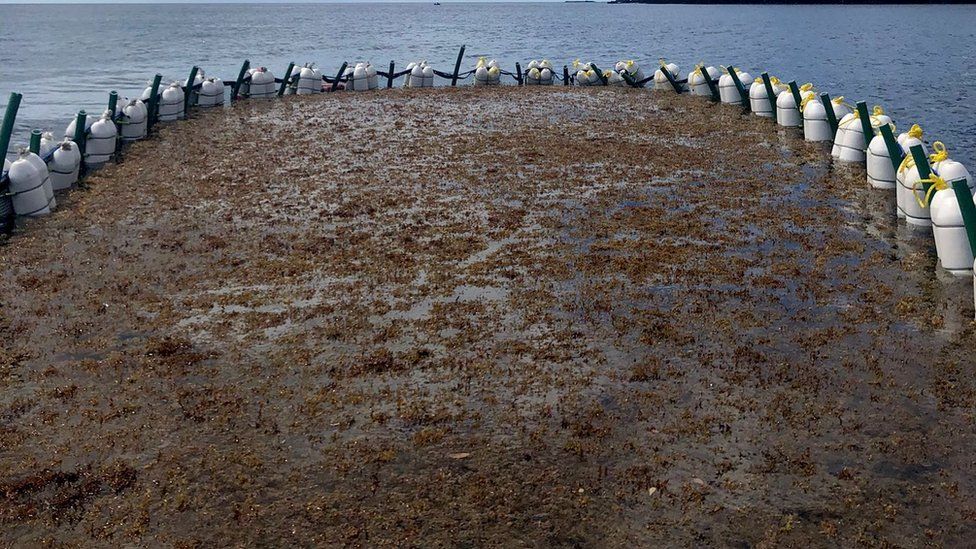
Testing whether sargassum seaweed can be contained in the open ocean
The project is currently road-testing its technology in the Caribbean and Mexico, and is inspired by the ideas of Prof Victor Smetacek, a marine biologist.
Described by Seafields as their Scientific Founder, he has long been fascinated by the potential to grow seaweed in enormous rotating ocean currents known as gyres.
"They collect all kinds of stuff in the middle," he says.
"The best known examples, of course, are the plastic garbage that is accumulating in the middle of the subtropical gyres."
In the same way these giant eddies trap islands of floating plastics, Seafields plans to hem in its crop of sargassum.
"The gyre just stops the sargassum from escaping," explains John Auckland.
"As long as we create the right conditions for it, it will only grow there.
If any escapes from our farm, it will just die off or just fail to continue growing."
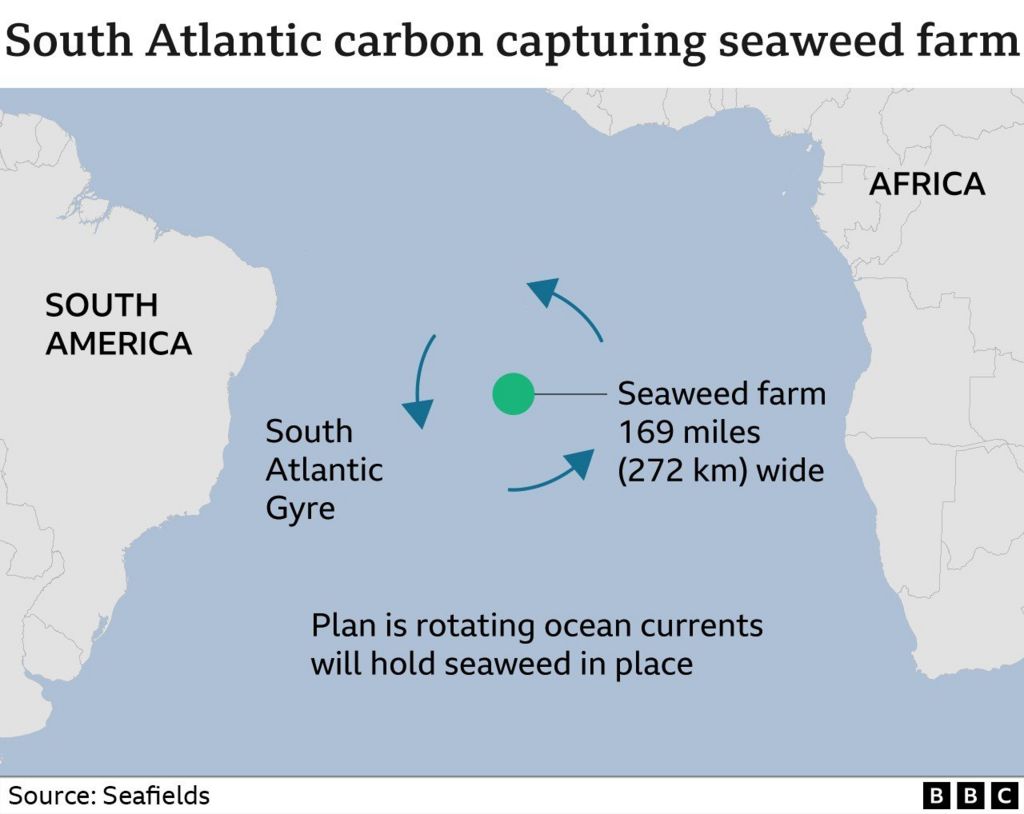
He had better be right.
Sargassum has plagued the Caribbean's tourism industry for decades.
When it washes up on the coast, its rot gives off a foul stench.
Not the best setting for relaxing on a beach towel.
But Seafields is confident this will not happen with their seaweed.
It says any that escapes from the farm should be starved the nutrients the team plans to syphon up from the ocean depths to feed their crop.
Because of evaporation from the subtropical sun beating down on it all day, the surface water trapped in gyres is very salty and low in nutrients.
It is why Prof Smetacek calls gyres "the oceans' deserts".
Yet, as these deserts slowly turn, they glide over a colder, nutrient rich ocean layer that the professor wants to draw to the surface to sustain the sargassum.
"If you were to connect the nutrient rich, deep water with pipes," explains Prof Smetacek, "bring that water up from the bottom and let it warm up, then it will flow up by itself and continue flowing forever."
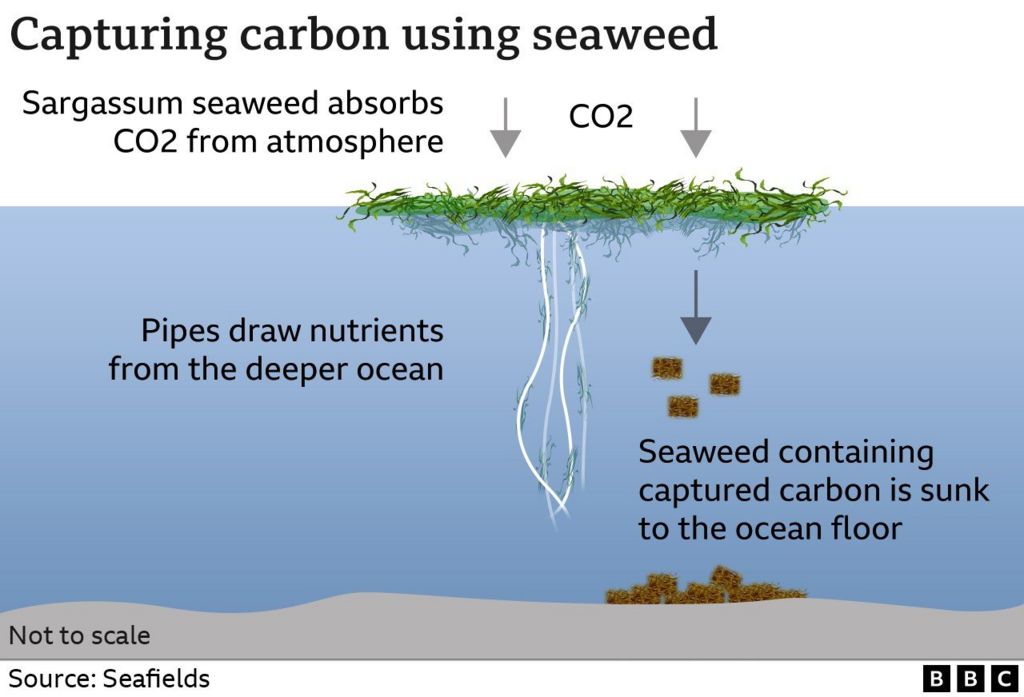
The team is testing their technology in early 2023.
It will be a nail-biter.
While first theorised back in 1956, the salt fountain has successfully been recreated, but nowhere near the enormous scale Seafields plans.
If the salt fountain does work to scale, Prof Smetacek predicts a bumper crop of sargassum.
"They have enormous growth rates.
They double their biomass every 10 days," he says.
"The good thing about seaweed is that you can harvest it with a combine harvester."
Prof Smetacek envisages floating harvesters will bale the crop up and then send it down to the inert depths of the sea floor, where there is so little oxygen the bales will not rot.
The carbon they contain will remain fixed in the seaweed's structure.
Tests are ongoing, but the team envisages they can sequester captured carbon for hundreds, perhaps thousands of years.
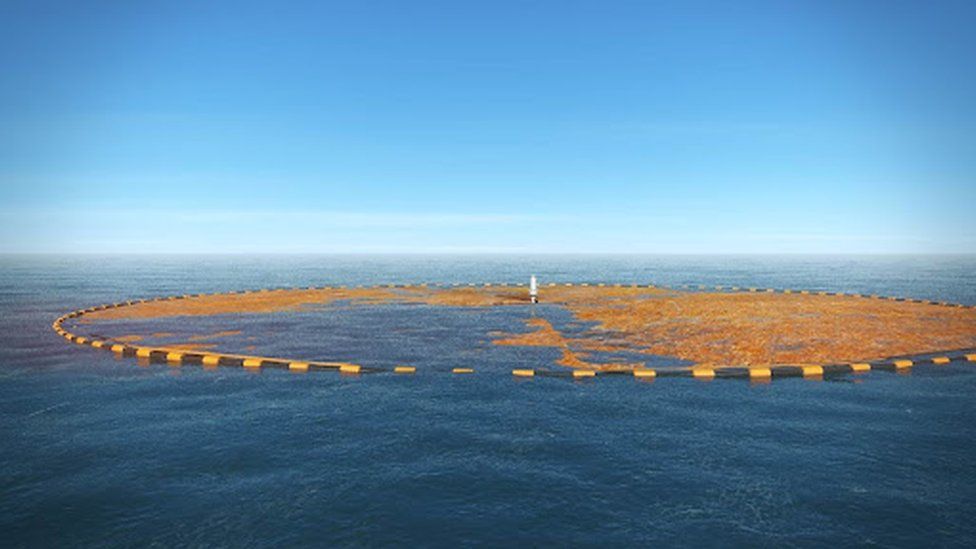
In the same way these giant eddies trap islands of floating plastics, Seafields plans to hem in its crop of sargassum.
"The gyre just stops the sargassum from escaping," explains John Auckland.
"As long as we create the right conditions for it, it will only grow there.
If any escapes from our farm, it will just die off or just fail to continue growing."

He had better be right.
Sargassum has plagued the Caribbean's tourism industry for decades.
When it washes up on the coast, its rot gives off a foul stench.
Not the best setting for relaxing on a beach towel.
But Seafields is confident this will not happen with their seaweed.
It says any that escapes from the farm should be starved the nutrients the team plans to syphon up from the ocean depths to feed their crop.
Because of evaporation from the subtropical sun beating down on it all day, the surface water trapped in gyres is very salty and low in nutrients.
It is why Prof Smetacek calls gyres "the oceans' deserts".
Yet, as these deserts slowly turn, they glide over a colder, nutrient rich ocean layer that the professor wants to draw to the surface to sustain the sargassum.
"If you were to connect the nutrient rich, deep water with pipes," explains Prof Smetacek, "bring that water up from the bottom and let it warm up, then it will flow up by itself and continue flowing forever."

The team is testing their technology in early 2023.
It will be a nail-biter.
While first theorised back in 1956, the salt fountain has successfully been recreated, but nowhere near the enormous scale Seafields plans.
If the salt fountain does work to scale, Prof Smetacek predicts a bumper crop of sargassum.
"They have enormous growth rates.
They double their biomass every 10 days," he says.
"The good thing about seaweed is that you can harvest it with a combine harvester."
Prof Smetacek envisages floating harvesters will bale the crop up and then send it down to the inert depths of the sea floor, where there is so little oxygen the bales will not rot.
The carbon they contain will remain fixed in the seaweed's structure.
Tests are ongoing, but the team envisages they can sequester captured carbon for hundreds, perhaps thousands of years.

A computer-generated image of a floating Sargasum farm
Seafields' financial backers hope sargassum will float money their way too.
They plan to sell credits for captured carbon on the world's carbon markets.
These credits allow businesses like airlines that cannot easily cut their emissions, to buy up carbon reductions made elsewhere.
Carbon market critics complain the onward rush to monetise CO2 capture has led to backers overselling technologies that eventually fall short of their stated aims.
Which begs the question: will Seafields' promising plan in the laboratory actually work when released into the wild?
Dr Nem Vaughan, associate professor in climate change at the University of East Anglia says: "I'm a boring scientist, [I'd want] more data, more research, before I'd wholeheartedly say that you're going to get that kind of gigatonne-scale removal happening."
Dr Vaughan is also worried about a scheme that itself could have profound impacts on biological systems.
Can Seafields contain so much potentially damaging seaweed out in the South Atlantic? Is the salt fountain robust enough to weather all conditions?
"People wouldn't be very happy," she says, "if tonnes of plastic tubes got set adrift by a big Atlantic storm like we've just had".
She says there are less technologically challenging ways of giving nature a nudge, such as growing more trees and hedgerows and protecting habitats such as peatlands that naturally hold carbon.
But, first and foremost, she says: "We need to not stick it [CO2] up there.
Just leave the fossil fuels in the ground, team.
It's an awful lot easier to just leave it in the ground than it is to try and capture it once it's out."
John Auckland concedes some elements of the process aren't yet proven, but believes it's worth the gamble.
"I see far more risky things on a daily basis that investors are willing to put their money into," he says.
"We can actually make significant gains in solving the climate crisis.
You can't not take this risk, because if everyone thought that way, no-one would be working on solutions of this scale."
Links :
Tuesday, October 18, 2022
Arctic sea ice thinning twice as fast as thought, study finds
The Arctic has warmed nearly 4 x faster than the global average since 1979, more than previously thought, per study by Finnish Meteorological Institute scientists
From The Guardian by Damian Carrington
Less ice means more global heating, a vicious cycle that also leaves the region open to new oil extraction
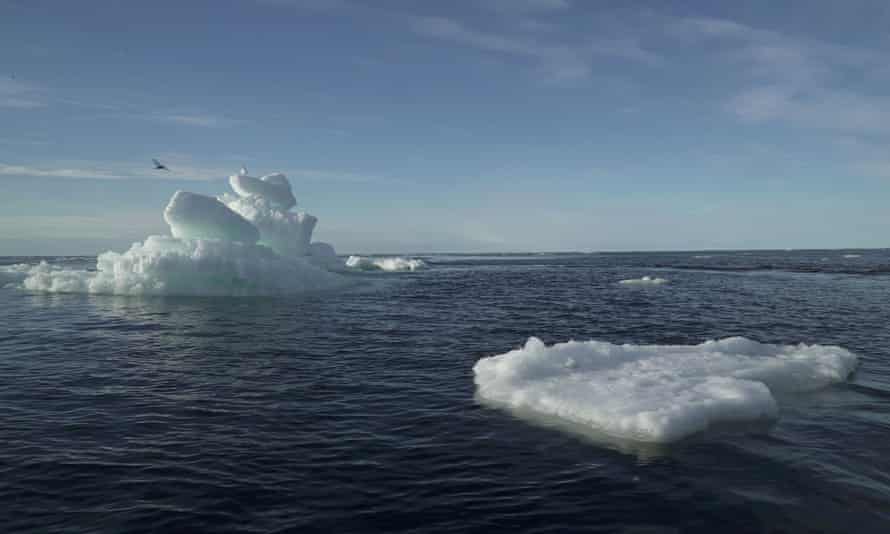 Snow weighs the ice down, so it is critical to know how deep it is in order to calculate the thickness of the ice.
Snow weighs the ice down, so it is critical to know how deep it is in order to calculate the thickness of the ice.Photograph: Natalie Thomas/Reuters
Arctic ice is melting as the climate crisis drives up temperatures, resulting in a vicious circle in which more dark water is exposed to the sun’s heat, leading to even more heating of the planet.
The faster ice loss means the shorter north-eastern shipping passage from China to Europe will become easier to navigate, but it also means new oil and gas extraction is more feasible.
Calculating the thickness of sea ice from satellite radar data is difficult because the amount of snow cover on top varies significantly.
Until now, the snow data used came from measurements by Soviet expeditions on ice floes between 1954 and 1991.
But the climate crisis has drastically changed the Arctic, meaning this information is out of date.
The new research used novel computer models to produce detailed snow cover estimates from 2002 to 2018.
The models tracked temperature, snowfall and ice floe movement to assess the accumulation of snow.
Using this data to calculate sea ice thickness showed it is thinning twice as fast as previously estimated in the seas around the central Arctic, which make up the bulk of the polar region.
Robbie Mallett of University College London, who led the study, said: “Sea ice thickness is a sensitive indicator of the health of the Arctic – and, when the Arctic warms, the world warms.
“Thicker ice acts as an insulating blanket, stopping the ocean from warming up the atmosphere in winter and protecting the ocean from the sunshine in summer.
Thinner ice is also less likely to survive during the Arctic summer melt.”
Changes in the Arctic are also increasingly believed to influence extreme weather such as heatwaves and floods around the northern hemisphere.
The rapid thinning of sea ice has consequences for human activities in the Arctic as well.
Advertisement
The newly exposed waters enabled storms to hit coastal communities and erode coasts, Mallett said.
The opening of the shorter north-eastern shipping route around Siberia means less fuel is needed to transport goods between China and Europe, leading to lower carbon emissions.
In February, a cargo ship made a round trip for the first time in winter.
“However, this also raises the risk of fuel spillages in the Arctic, the consequences of which could be dire,” said Mallett.
“There’s also a lot of interest in oil and gas extraction from the Russian shelf seas,” Mallett said.
But the research revealed much greater annual variability in ice thickness than estimated before.
“Knowing the thickness of the ice is pretty critical to planning those activities, so the enhanced variability is generally bad news for those planning to work in the Arctic,” he said.
The Soviet-era data was hard won, Mallett said.
“They sent these brave guys out and they sat on these drifting stations and floated around the Arctic, sometimes for years at a time, measuring the snow depth.” But the Intergovernmental Panel on Climate Change identified the lack of more recent data as a key knowledge gap in 2019.
Sea ice thickness is calculated from satellite radar data that measures how high the ice sits above the sea surface.
Snow on top of the ice is invisible to the radar signals but it weighs the ice down, so it is critical to know the depth of snow.
“Sea ice has begun forming later and later in the year, so the snow on top has less time to accumulate,” said Mallett.
“Our calculations account for this declining snow depth for the first time.”
Sea ice thickness is calculated from satellite radar data that measures how high the ice sits above the sea surface.
Snow on top of the ice is invisible to the radar signals but it weighs the ice down, so it is critical to know the depth of snow.
“Sea ice has begun forming later and later in the year, so the snow on top has less time to accumulate,” said Mallett.
“Our calculations account for this declining snow depth for the first time.”
The research is published in the journal The Cryosphere.
“We are still learning about the changes to the Arctic environment, and one of the big unknowns – or less well-knowns – is snow cover,” said Walt Meier, at the US National Snow and Ice Data Center, and not involved in the new research.
“The approach in the study is a significant improvement over older methods, and the results fit with other changes we’re seeing with Arctic sea ice, including earlier melt onset, lower summer ice cover, and later freeze-up.”
Prof Julienne Stroeve, at UCL, said: “There are [still] a number of uncertainties but we believe our new calculations are a major step forward.
We hope this work can be used to improve climate models that forecast the effects of long-term climate change in the Arctic – a region that is warming at three times the global rate and whose ice is essential for keeping the planet cool.”
Links :
“We are still learning about the changes to the Arctic environment, and one of the big unknowns – or less well-knowns – is snow cover,” said Walt Meier, at the US National Snow and Ice Data Center, and not involved in the new research.
“The approach in the study is a significant improvement over older methods, and the results fit with other changes we’re seeing with Arctic sea ice, including earlier melt onset, lower summer ice cover, and later freeze-up.”
Prof Julienne Stroeve, at UCL, said: “There are [still] a number of uncertainties but we believe our new calculations are a major step forward.
We hope this work can be used to improve climate models that forecast the effects of long-term climate change in the Arctic – a region that is warming at three times the global rate and whose ice is essential for keeping the planet cool.”
Links :
Monday, October 17, 2022
Humans can dive deeper into the world’s oceans than ever before with Alvin
The Beebe Hydrothermal Vent Field, the deepest and hottest known
hydrothermal vent in the world, is visible from a dive of the
submersible Alvin near the Cayman Islands in the Caribbean.
Woods Hole
Oceanographic Institution
From CNN by Ashley Strickland
Black smoke appears to rise from chimney-like formations of the hottest and deepest known hydrothermal vents on Earth.
Over the summer, Anna Michel was able to see them for herself — a few miles beneath the ocean’s surface.
Michel, an associate scientist at the Woods Hole Oceanographic Institution in Massachusetts, was part of a three-person crew aboard the submersible Alvin as it dove down to the Mid-Cayman Rise.
Black smoke appears to rise from chimney-like formations of the hottest and deepest known hydrothermal vents on Earth.
Over the summer, Anna Michel was able to see them for herself — a few miles beneath the ocean’s surface.
Michel, an associate scientist at the Woods Hole Oceanographic Institution in Massachusetts, was part of a three-person crew aboard the submersible Alvin as it dove down to the Mid-Cayman Rise.
Known as the Beebe Hydrothermal Vent Field, these vents exist on the ocean floor where two tectonic plates are separating about a half an inch (15 millimeters) per year south of the Cayman Islands.
With its upgrades, Alvin is capable of diving 4 miles beneath the ocean's surface after rigorous testing.
Marley Parker/Woods Hole Oceanographic Institution
Hydrothermal vents form where rising magma beneath the seafloor creates underwater mountain ranges called ocean ridges.
The chilly seawater seeps through seafloor cracks and becomes heated to 750 degrees Fahrenheit (400 degrees Celsius) as it interacts with the magma-heated rocks.
This interaction releases minerals from the rocks, venting out nutrients and providing the perfect ecosystem for unusual marine life that clusters around them.
Alvin, which has been operating for 58 years, reached a record depth of 6,453 meters (4 miles) in July in the Puerto Rico Trench, north of San Juan, Puerto Rico.
Alvin, which has been operating for 58 years, reached a record depth of 6,453 meters (4 miles) in July in the Puerto Rico Trench, north of San Juan, Puerto Rico.
On multiple excursions, Alvin traveled 6,200 to 6,500 meters (3.8 to 4 miles) below the ocean’s surface after meeting requirements set by the US Navy and Naval Sea Systems Command.
The new range means that about 99% of the seafloor is now within Alvin’s reach as well as that of its pilot and two passengers.
The new range means that about 99% of the seafloor is now within Alvin’s reach as well as that of its pilot and two passengers.
It’s the third increase in depth for Alvin since the submersible was commissioned, according to Andrew Bowen, principal engineer at Woods Hole Oceanographic Institution’s Applied Ocean Physics & Engineering.
“That was the first time I went to a hydrothermal vent site in person and to me, that was just absolutely incredible,” said Michel, also the chief scientist of the National Deep Submergence Facility that operates Alvin. “We were able to bring humans to see places that we’ve not gone to before with Alvin.”
“That was the first time I went to a hydrothermal vent site in person and to me, that was just absolutely incredible,” said Michel, also the chief scientist of the National Deep Submergence Facility that operates Alvin. “We were able to bring humans to see places that we’ve not gone to before with Alvin.”
Alvin can carry three people deep underwater, including a pilot and two passengers.
Marley Parker/Woods Hole Oceanographic Institution
Michel has worked with remotely operated underwater vehicles for 20 years, but this summer was her first time as an Alvin passenger.
Despite the enclosed space of the titanium-encased sub, Michel never felt claustrophobic.
Instead, she said it felt like riding in an elevator, and the eight-hour expedition flew by.
“You see a lot more three-dimensionality in real life and your spatial awareness is very different of these huge spires,” she said, referring to the vents.
“You see a lot more three-dimensionality in real life and your spatial awareness is very different of these huge spires,” she said, referring to the vents.
A Dumbo octopus can be seen on the ocean floor during one of Alvin's dives.
Woods Hole Oceanographic Institution
Scientists will now have direct access to the ocean’s deepest zones, exploring places humans have never been to before.
Researchers expect to find new species and study the fundamentals of life.
At the Puerto Rico Trench, where underwater cliffs form as the North American and Caribbean tectonic plates collide, the team collected samples of exposed ocean crust and some of the deepest known examples of seafloor organisms.
During the Mid-Cayman Rise expedition, researchers took biological and chemical samples from the hydrothermal vents.
Sabrina Douglas emerges from Alvin after a dive.
She became the first Cayman native to dive down to the Mid-Cayman Rise, part of the boundary between the North American and Caribbean tectonic plates.Marley Parker/Woods Hole Oceanographic Institution
Previously, Alvin was only able to travel down 4,500 meters (2.7 miles).
The new feat was possible after 18 months of overhauling the 43,000-pound (19,500-kilogram) submersible.
Alvin’s new upgrades include a 4K imaging system, a new hydraulic manipulator arm, more powerful thrusters, new motor controllers and an integrated command and control system.
Alvin has contributed to numerous discoveries, including shipwrecks and ocean science.
Alvin has contributed to numerous discoveries, including shipwrecks and ocean science.
The human-operated vehicle, or HOV, has carried more than 3,000 people on over 5,000 dives to the deep.
It’s the only deep-submergence vehicle in the US capable of carrying humans to the deep ocean.
Researchers have used Alvin to study plate tectonics and hydrothermal vents, discover strange sea life — and even explore the RMS Titanic in 1986 after Woods Hole Oceanographic Institution scientist Robert Ballard located the famed shipwreck.
Researchers have used Alvin to study plate tectonics and hydrothermal vents, discover strange sea life — and even explore the RMS Titanic in 1986 after Woods Hole Oceanographic Institution scientist Robert Ballard located the famed shipwreck.
The submersible also helped the Navy locate a missing hydrogen bomb from World War II and took scientists to the seafloor beneath the Deepwater Horizon oil spill of 2010.
University of Hawaii geologist Ken Rubin, professor of geochemistry and volcanology, holds a fragment of the North American tectonic plate collected by Alvin.Marley Parker/Woods Hole Oceanographic Institution
“For almost 60 years, the deep-submergence vehicle Alvin has unveiled the ocean’s mysteries — not just for military and national security purposes but also for the scientific benefit of society as a whole,” said Rear Adm. Lorin C. Selby, chief of naval research, in a statement.
The sub uses its two arms to collect samples that can be brought to the surface when Alvin “parks” aboard its ship, the R/V Atlantis.
Alvin’s capabilities mean that scientists participating in a dive can capture photos and videos of the seafloor’s alien landscape and rare creatures, conduct experiments and deploy scientific instruments.
Tube worms are attached to a rock collected from the Beebe Hydrothermal Vent Site.
Marley Parker/Woods Hole Oceanographic Institution
Alvin takes its name from Allyn Vine, the Woods Hole Oceanographic Institution physicist and oceanographer who championed the idea of submersibles that could carry researchers safely through the deep sea to conduct science in an otherwise inaccessible place.
“Every generation of scientists presents new questions, and Alvin has responded in ways that have rewritten textbooks. There’s a new generation waiting to use the sub, and to them we say, ‘Alvin is ready, where do you want to go?’”
Scientists submit proposals to reserve time on Alvin to conduct their research, and the submersible undertakes about 100 dives per year to explore ocean biodiversity, Earth’s crust and the way life thrives at extreme depths.
Scientists submit proposals to reserve time on Alvin to conduct their research, and the submersible undertakes about 100 dives per year to explore ocean biodiversity, Earth’s crust and the way life thrives at extreme depths.
The R/V Atlantis will take Alvin across the Pacific Ocean on multiple dives in 2023.
Ken Kostel/Woods Hole Oceanographic Institution
A variety of other underwater vehicles, including autonomous ones, are increasing exploration possibilities beneath the waves.
“Imagine exploring the Grand Canyon at night with a flashlight,” Bowen said.
“Historically, that’s sort of what we’ve been able to do, and Alvin has been a key part of that. Increasingly, we’ve added more technology in the form of drones, tethered vehicles and autonomous systems that really broadens the footprint for the Alvin submersible.
“Visiting the deep ocean is a laborious process. Getting the maximum benefit out of going there is where technology has a huge potential benefit.”
“Visiting the deep ocean is a laborious process. Getting the maximum benefit out of going there is where technology has a huge potential benefit.”
Links :
- CNN : Stunning new 8K footage shows Titanic as it's never been seen before / 'What we know now is how much we don't know': Enter the strange world of the ocean twilight zone / The man who found the Titanic is on a new quest
- GeoGarage blog : Unprecedented impact of Deepwater Horizon on deep ocean revealed / Ocean discoveries are revising long-held truths about life / Probing the ocean's undiscovered depths / Ocean science giant Alvin set for upgrade
Sunday, October 16, 2022
Subscribe to:
Comments (Atom)

